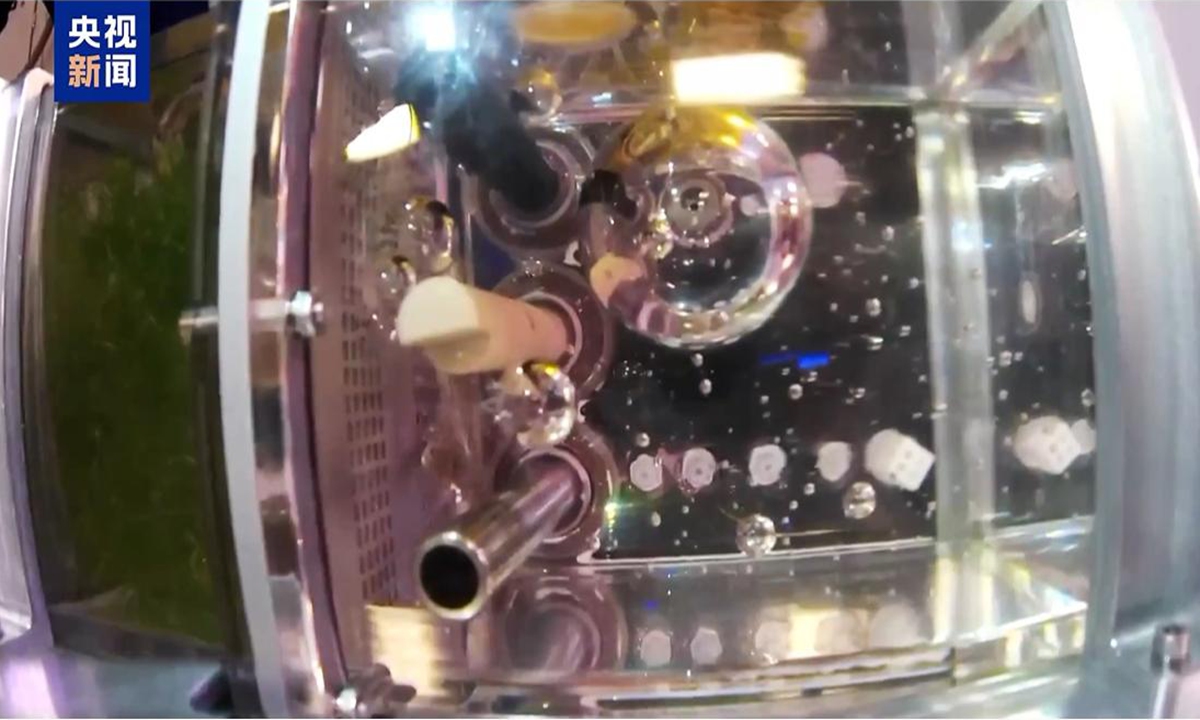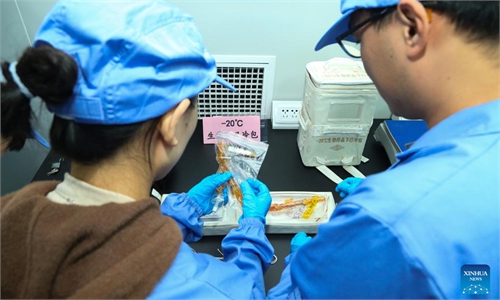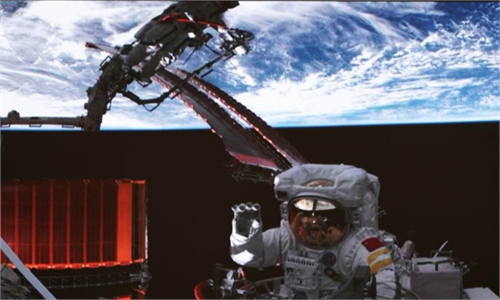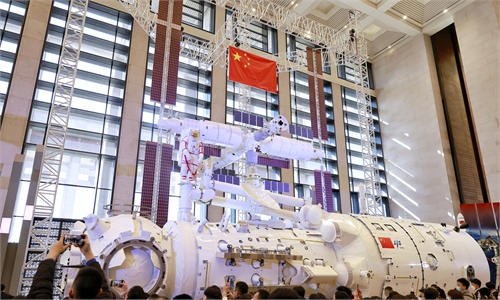China space agency's first progress report highlights scientific research and applications enabled by its space station

Photo: A screenshot from CCTV
The China Manned Space Agency (CMSA) on Monday released its first-ever progress report, providing a comprehensive summary of the scientific research and applications conducted in China's space station over the past two years. The report, which will now be published annually, highlights key achievements in the country's manned space program.
Over the past two years, China has successfully conducted four manned flights, three cargo resupply missions, and four spacecraft return missions. During this period, five taikonaut crews carried out 15 long-term stays in orbit, with 10 taikonauts performing extravehicular activities. Multiple extravehicular maintenance missions were completed, setting a new world record for the duration of a single spacewalk. Additionally, the selection of the fourth batch of reserve taikonauts was completed, including two payload specialists from Hong Kong and Macao, according to the report.
The report also points out that since the in-orbit construction of the space station, China has launched eight manned spacecraft and seven cargo spacecraft, with a total of 21 taikonauts stationed there, and that its overall operation is currently safe and stable, achieving normalized life in space, according to China Central Television (CCTV).
The first batch of space science application experiments and technological tests conducted on the China space station has progressed smoothly and yielded fruitful results, demonstrating a certain level of advancement and innovation. Currently, China has planned four major research areas: space life and human body research, microgravity physical sciences, space astronomy and Earth sciences, and new space technologies and applications, encompassing 32 research subjects, according to the CMSA report.
As of December 1, 2024, a total of 181 scientific and application projects have been carried out in orbit, with nearly 2 tons of scientific materials delivered and nearly 100 types of experimental samples returned, producing over 300 terabytes of scientific data, according to CCTV.
China has also achieved several groundbreaking results, including its first successful cultivation of new germplasm resources for space-grown and regenerated rice and the longest in-orbit operation of a space water ecosystem in the world.
Scientific teams from various fields have focused on meeting major national needs through in-depth exploration, producing a series of original, cutting-edge, and innovative achievements. These efforts have resulted in the publication of more than 500 high-impact SCI papers and the granting of more than 150 patents, with some achievements already transferred, applied, and promoted. This has significantly advanced the rapid development of China's space science and applications.
The report points out that in the field of space life sciences and human body research, research will focus on advancing fundamental biology, biotechnology translation, life ecology, and the origins of life. Key areas of focus will include space reproduction of mammals and closed-loop life ecosystems, aiming to further reveal and understand the mechanisms of the space environment's impact on life at various levels and the patterns of responses and changes.
The program also aims to achieve breakthroughs in areas such as stem cells and regenerative medicine, drug development, and synthetic biology manufacturing.
As a national space laboratory, the China Space Station will conduct over a thousand research projects during its 10-15 years of operation. It will actively promote science popularization and international cooperation, uniting top-tier scientific teams from China and around the world, according to the report.
The report has selected a total of 34 representative scientific research and application achievements, along with a range of science communication and cultural activities. This addresses the public's interest and expectations concerning the progress of the China space station, while comprehensively showcasing China's capabilities and innovative spirit in the field of space science and technology, as reported by CCTV.
This report, presenting an overview of the work accomplished over the past two years, offers the public a clearer and more comprehensive understanding of overall progress, rather than focusing solely on the specifics of individual launches, Wang Ya'nan, chief editor of Beijing-based Aerospace Knowledge magazine, told the Global Times on Monday.
More importantly, it serves as a guide for both the public and technical teams to grasp upcoming objectives and directions, while also paving the way for future international cooperation with potential institutions, Wang added.
On December 18, the Chinese Academy of Engineering released the "Global Engineering Frontiers 2024" report. In the report, the Chang'e-6 mission and China's progress in its low Earth orbit communication satellite constellation were selected as two of the "Top Ten Global Engineering Achievements in 2024" in the aerospace field.
In 2024, driven by the "dual engine" of its "national team" and the booming commercial space sector, China also excelled in the number of rocket launches, satellite networking, technological innovation, commercial space development and international cooperation, Tan Yonghua, a senior expert of China's Academy of Aerospace Liquid Propulsion Technology, told the Global Times in a previous interview.



